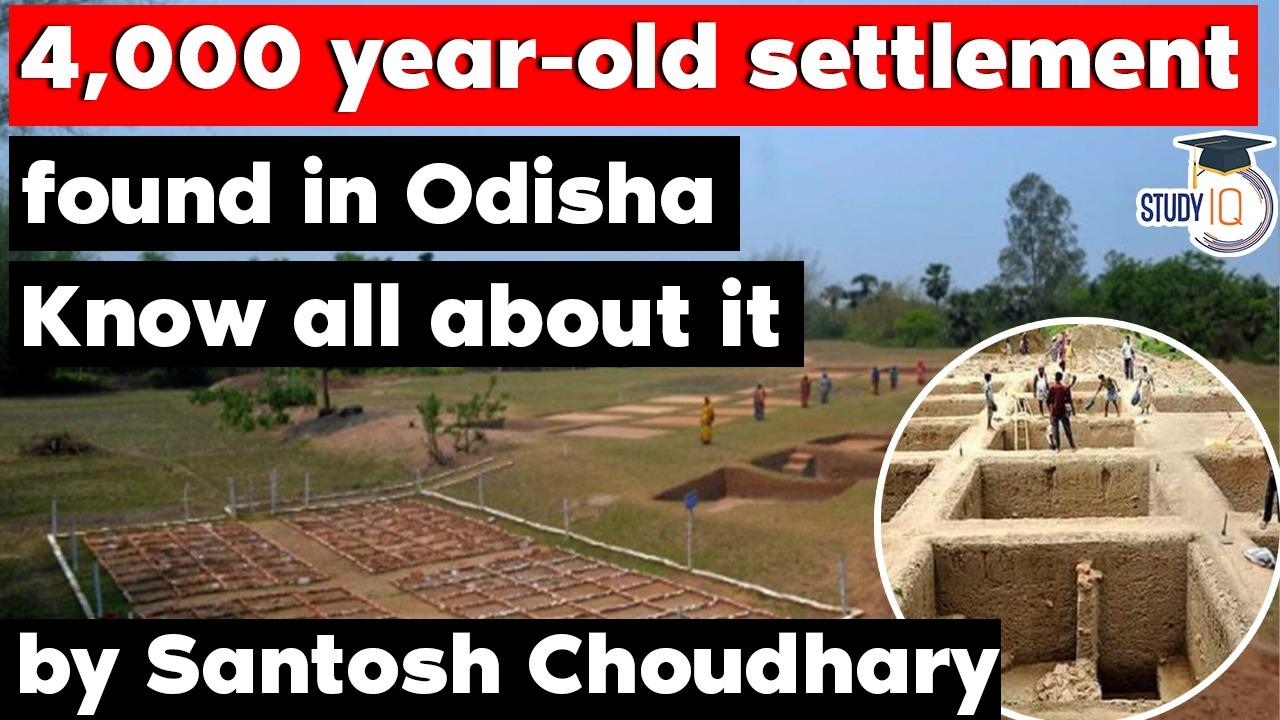Table of Contents
Archaeologists unearth remains of 4,000 years old settlement in Odisha’s Balasore
- In a significant development, archaeologists have discovered fortified historical sites in Odisha’s Balasore district.
- Articles, dating back from 2000 BC to 100 BC and belonging to the Chalcolithic phase, Iron age and Early Historic period have been recovered for the first time in Durgadevi and Ranasahi in Balasore.
- The Balasore district holds a prominent place in history for its maritime activities from the early part of the Christian era to the late medieval period.
- However, no major early historic sites were documented previously in this region, prior to the discovery of Durgadevi and Ranasahi.
- Simultaneously, Buddhism flourished along with maritime activities in this region. Buddhist remains have been found from Ayodhya, Jayarampur, Kupari, Sujanagarh, Soro, Bardhanpur areas as well.
- The Odisha Institute of Maritime and South East Asian Studies (OIMSEAS), an archaeological wing of the State government, has discovered a 4,000-year-old settlement and ancient artifacts in Balasore district.
- After uncovering traces of fortified early historic sites near Balasore town, the OIMSEAS had sought permission from the Archaeological Survey of India (ASI) to document the site at the Durgadevi village in Remuna tehsil.
- According to the ASI, the site has a circular mud fortification of about 4.9 km between the Sona river to the south and the Burahabalang river on its northeastern margin.


- The point of OIMSEAS archaeologists’ study was to correlate simultaneous growth and development of maritime activities, with urbanisation on the east coast of India linking the Ganga valley in the north and the Mahanadi valley in central Odisha.
- Their focus was particularly on the early cultural development in northern Odisha.
- They carried out horizontal excavation over 2 acres of high land area where a cultural deposit of about four to five metres was seen.
- In the first phase of work, scientific archaeological digging was carried out in the selected trenches, which were up to 2.6 metres.
- The three cultural phases discovered at the site are — Chalcolithic (2000 to 1000 BC), Iron Age (1000 to 400 BC) and Early Historic Period (400 to 200 BC).
- These phases cover the time period from 2000 BC to 200 BC, which means 4000 to 2000 years from the current time.
Chalcolithic Period (2000 to 1000 BC)
- During excavation, the excavators discovered the base of circular huts, black on red painted pottery, black slipped ware, red slipped ware and copper objects belonging to the Chalcolithic period (2000 to 1000 B.C.).
- The floor of the circular huts was rammed with red soil mixed with Genguti.
- The base of the circular hut and utilitarian objects indicated the lifestyle of people, who were mostly leading a settled life with agriculture, domestication of animals and fishing as occupation.
Iron Age (1000 to 400 BC)
- The evidence and remains of the Iron Age period (1000 to 400 B.C.) found from the area included pottery remains of black burnished ware, black and red ware, red polished fine black ware with slip and chocolate ware, terracotta sling balls, hopscotch along with iron objects like nails, arrowhead, crucible and slag of various kinds.
- The lifestyle of this phase is marked little improved and it depended on agriculture and production of various other crops.
- People during this period also led a settled life. The use of iron is a landmark phase in the growth of civilization in Odisha, particularly in North Odisha.
Early Historic Phase (400 to 100 BC)
- During this phase, fortification of the area started, which also led to the beginning of King’s rule.
- The remnants of pottery specimens of red ware, red polished ware, black slipped ware, coarse grey ware, fine and superfine grey ware, terracotta ear studs, bangles, beads, hopscotch stopper, gamesman, terracotta wheels and some conical objects were found.
- During this phase, people became more advanced and improved from an agricultural base to trade, construction of fortifications around the site with a moat which signify the emergence of urbanisation at Durgadevi from around 400 to 200 BCE.
Latest Burning Issues | Free PDF






















 WhatsApp
WhatsApp